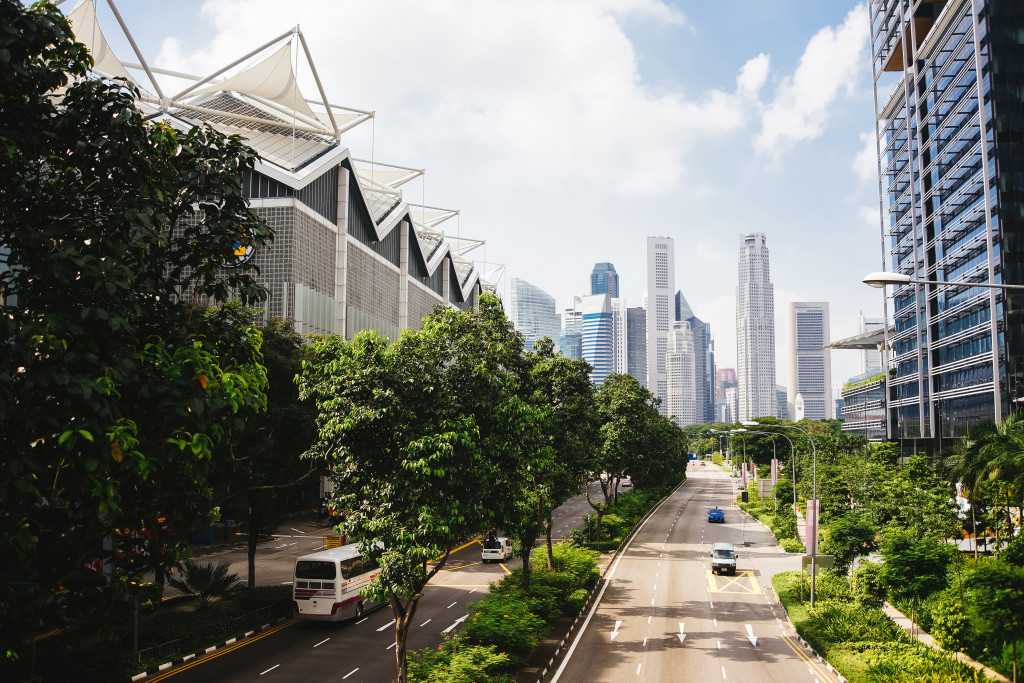The majority of the world’s population is urbanizing. As cities become more densely populated, people are becoming concerned with the consequences of climate change. As a result, developers, public leaders, and community activists are reconsidering green spaces and their ability to resolve crucial urban infrastructure and public health concerns.
Green spaces are generally regarded as effective instruments for strengthening urban communities and the local economy. It’s also a great way to promote exercise, as well as emotional and mental well-being. Having private and green spaces to go to when you’re stressed or tired is a big game-changer for people looking for a place to stay.
So, before you contact a listing realtor in your area and start visiting houses for sale, be sure to make green space in the community you’ll be living in one of your criteria in finding a home.
Check our quick list to understand better how green areas may benefit you and the community.
Lessens the urban heat island effect.
Green spaces in urban areas cut pollutants and can help lessen the urban heat island effect. If you are not familiar with the urban heat island effect, it refers to the heat confined in built-up places. Human activity in towns and cities is the primary cause of this event. The heat created by people, transportation, businesses, and industrial factories is trapped in narrow streets and concrete buildings and cannot disperse into the environment. This can cause metropolitan areas to have temperatures 3-4°C warmer than the typical rural area.
Serves as green roofs.
The essential factor in establishing your cities safety and comfort is to plan for green spaces. Planting greens on your rooftop and producing green roofs, for example, has been shown to lessen the urban heat island effect. The soil, vegetation, and greenery lower exterior temperature while also acting as an insulator for the buildings below.
Green roofs can also assist in managing rainfall by catching it as it falls and filtering it to remove contaminants. By creating low-maintenance, biological green areas in the city center; green roofs may give potential remedies to urban heating.
Green roofs can also provide green space that is both aesthetically and economically useful.
Increase the resilience of cities.
Urban resilience is characterized as the ability of individuals, community members, and organizations within a city to endure, adjust, and flourish in the face of pressures or even disasters. Thus, localities incorporate parks into their infrastructural designs to manage rainwater and cut floods to make their communities more resilient.
Resilience, however, is not only tested with calamities and disasters. With the pandemic that shocked the world, many cities have realized how these green areas may benefit their residents by giving mental and emotional solace especially when countries imposed travel restrictions. Modern cities recognize that green spaces are essential to long-term wellness and balance in urban design.

Cleans the air and improves public health.
Urban green areas have an innate potential to cleanse airborne pollutants. Trees in urban parks filter up to 7,111,000 tons of contaminants from the air each year, costing cities $3.8 billion.
Green areas also filtrate rain, lowering water pollution that preserves drinking water, and reduces waterborne disease risks. Moreover, parks, recreational areas, and household greenery in cities can improve both the health and wellbeing of the residents of the area. It can lower illness and death among city dwellers by offering psychological comfort and stress relief.
That is why it is not surprising to know that urban green spaces, ranging from trees and parkettes to green roofs and vast natural areas, give considerable health benefits to people and the community.
Boosts local economies and creates new employment opportunities.
Most well-managed green spaces and parks do have significant economic solid influence in their surrounding communities. Parks attract inhabitants and companies, increasing city income. Furthermore, it has the potential to stimulate private investment and provide job possibilities for local inhabitants.
For example, $1.2 million in federal green space funds in Denver led to more than $2.5 billion in localized public and private funding. Green spaces support a wide range of local companies, both inside the park and nearby. As a result, long-term investments in maintaining high-quality green areas will result in long-term economic growth.
Attractive parks and environmentally friendly areas are at the heart of sustainable and mutually beneficial communities. Organizations and government leaders are actively utilizing parks’ many advantages to fulfill city-wide equality goals.
Park managers, public, private, civic, and philanthropic organizations channel resources to the neediest populations via community involvement and a balanced approach to park funding. This is a movement that everyone should support.





